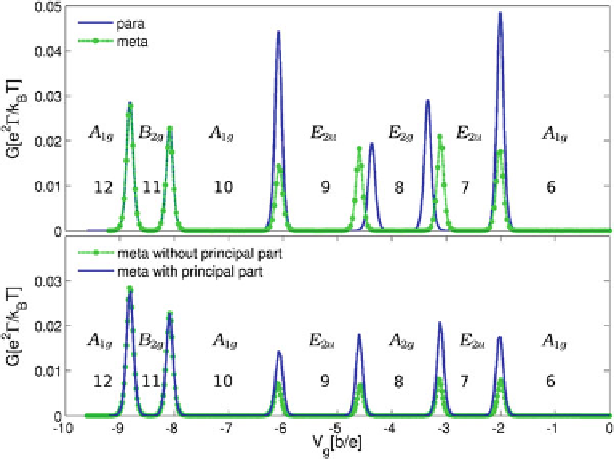Biomedical Engineering Reference
In-Depth Information
Fig. 7.5
Conductance of the benzene I-SET as a function of the gate voltage. Clearly visible are
the peaks corresponding to the transitions between ground states with
N
and
N
+
1 particles. In the
low conductance valleys the state of the system has a definite number of particles and symmetry
as indicated in the upper panel for the para, in the lower for the meta configuration. Selective
conductance suppression when changing from the meta to the para configuration is observed.
From [
20
]
f
(
Δ
E
)
Δ
=
−
S
N
,
(7.39)
(
S
N
+
1
−
S
N
)
f
(
Δ
E
)+
and determine the shift of the conductance peaks.
Yet, the most striking effect regarding transitions with orbitally degenerate states
participating is the
systematic suppression
of the linear conductance when changing
from the para to the meta configuration. The suppression is appreciable despite the
conductance enhancement due to the principal part contributions to the GME (see
Fig.
7.5
, lower panel). Thus, we will for simplicity discard them in the following
discussion.
The conductance suppression is determined by the combination of two effects:
the reduction to the symmetric Hilbert space in the para configuration and the
interference effects between degenerate orbitals in the meta configuration. The
reduction to the symmetric Hilbert space implies also a lower number of conducting
channels (see Table
7.4
). One would expect a suppression of transport in the para
configuration. As we can see from Table
7.4
on the example of the 6
↔
7 transition
peak,
Δ
max
is higher in the para configuration but not enough to fully explain the
difference between the two configurations. The second effect determining transport
is the interference between the
E
-type states, which is accounted for in the overlap

